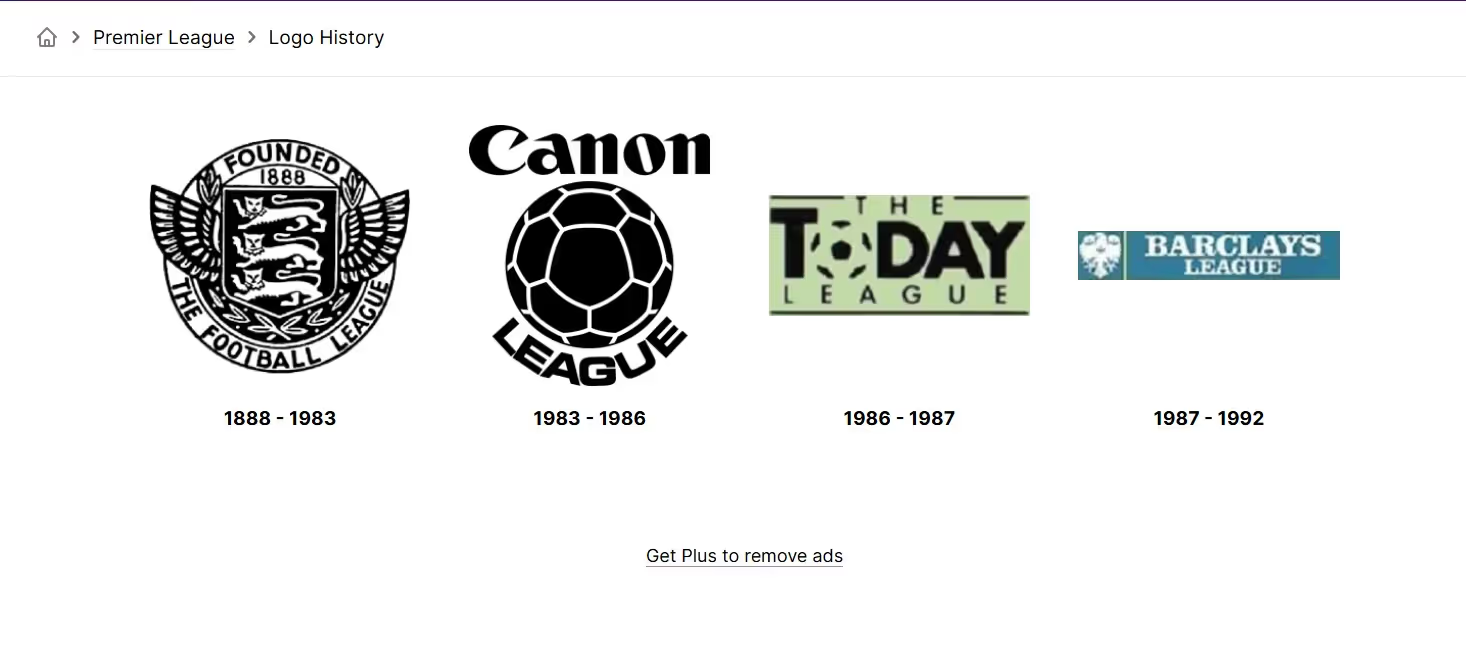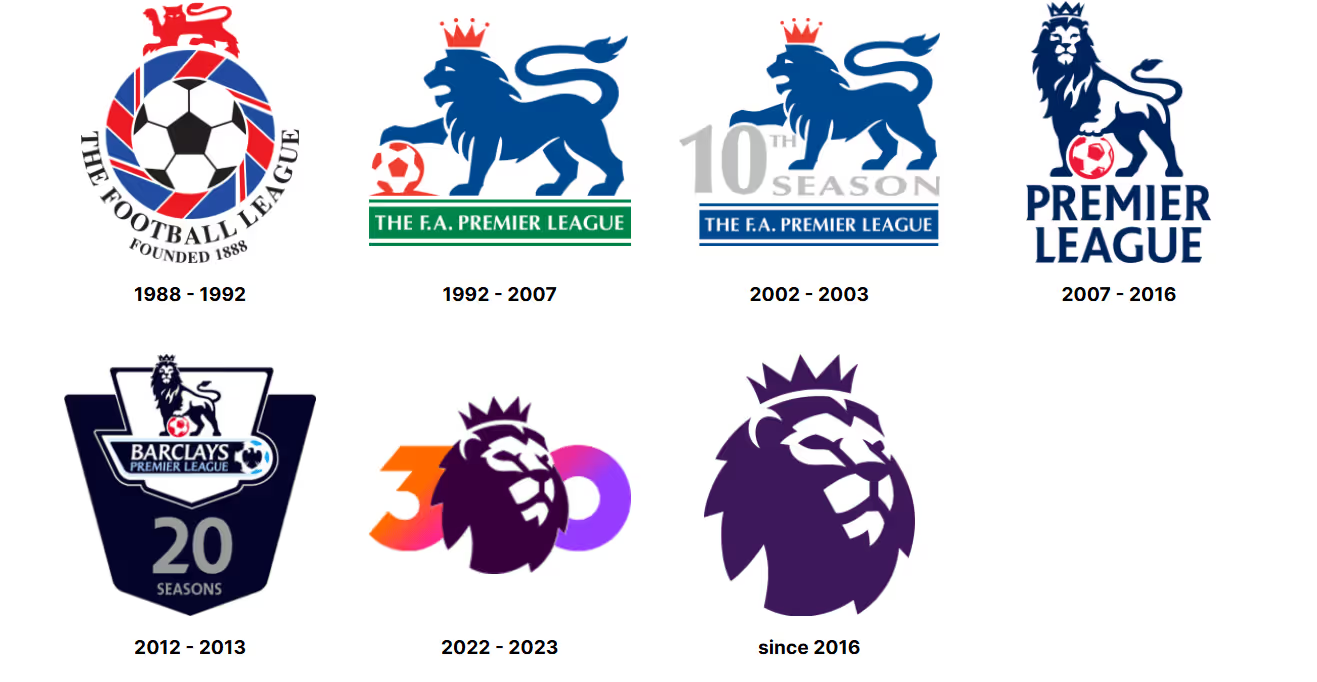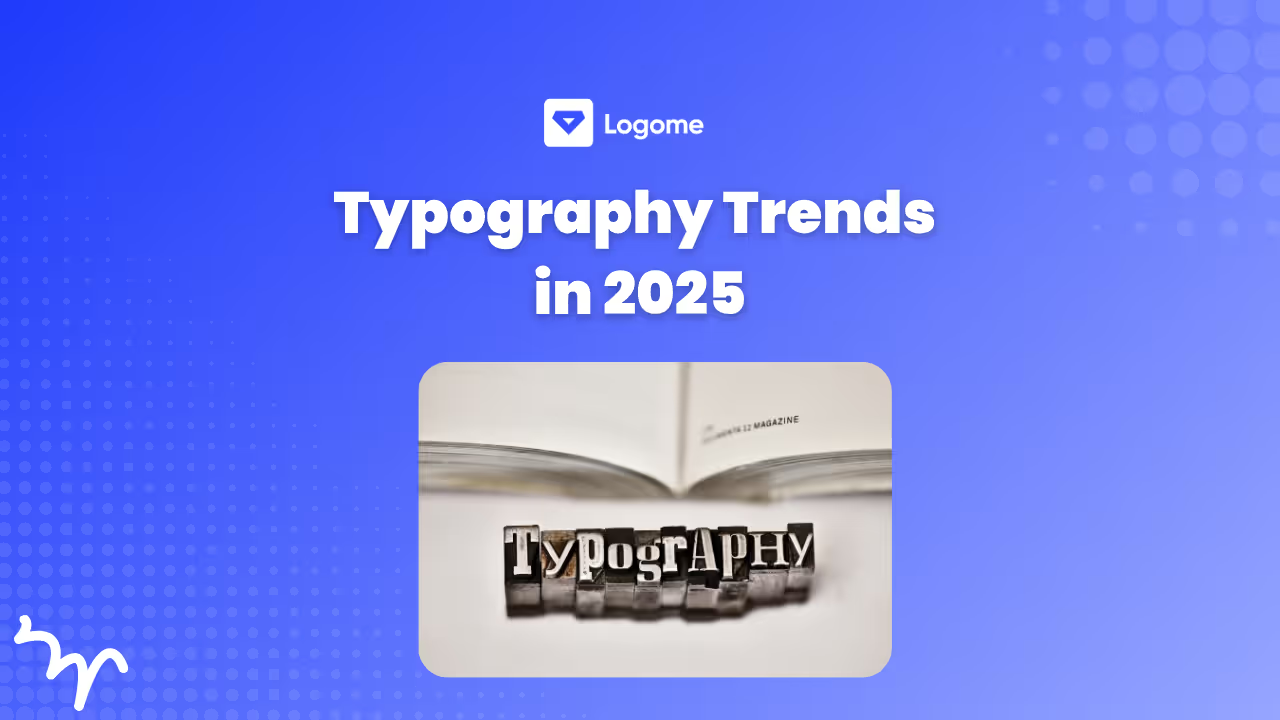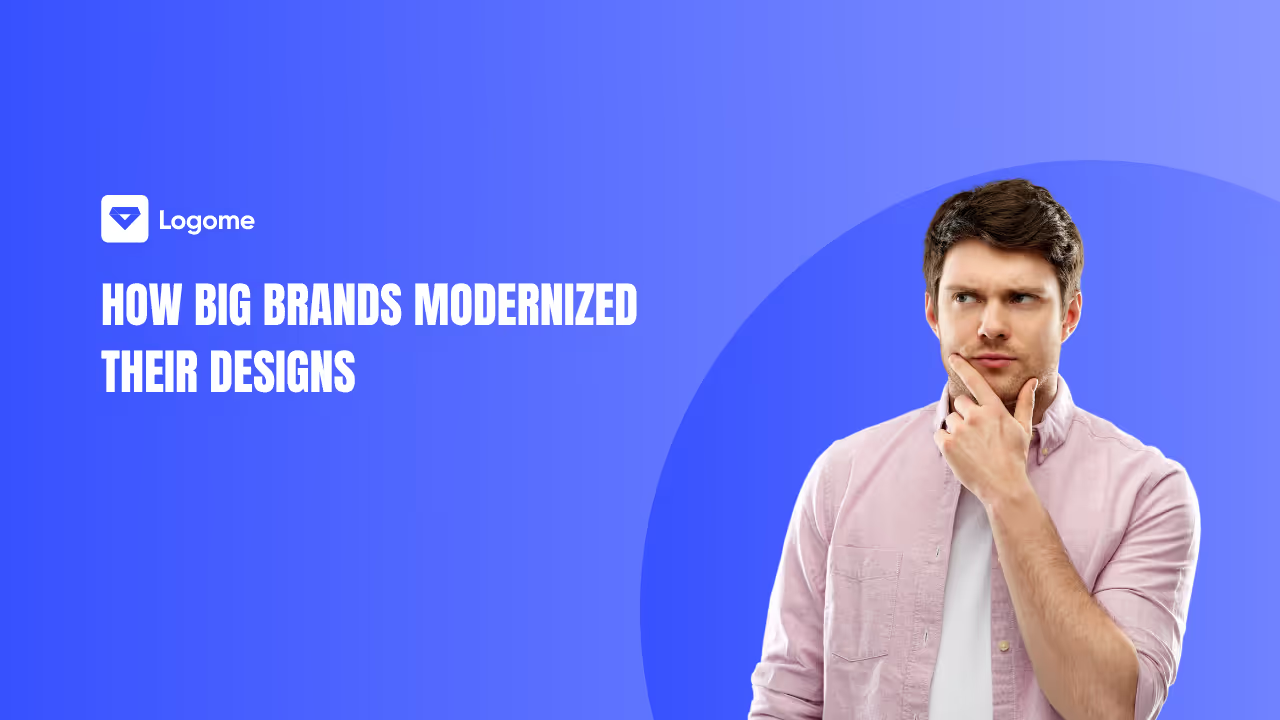The History of the English Premiere League Logo
Follow the English Premier League logo’s journey from 1888 to today. Learn the meaning, history, and changes behind football’s most iconic badge.
Follow the English Premier League logo’s journey from 1888 to today. Learn the meaning, history, and changes behind football’s most iconic badge.

Welcome! If you’ve ever cheered for your favorite football club, you’ve seen the English Premier League logo—on shirts, stadiums, and everywhere football lives. This symbol carries far more than lines and colors. It is the heart of English football, a signal of passion, and a bridge to history. Let’s walk through every era of the English Premier League logo. You’ll see why each design matters, how it shaped the game’s culture, and what the logo means to millions of fans around the world.

Here’s a glimpse into its history and how it evolved with time.
The story starts in 1888 with the creation of the Football League. Its first logo looked proud and noble: three lions stood strong on a shield, framed by wings. The words “FOUNDED 1888” and “THE FOOTBALL LEAGUE” made it official. Every detail linked to English heritage and royal tradition. For nearly a century, this crest graced match programs, medals, and banners. It wasn’t flashy. Instead, it brought a sense of pride and trust. Back then, football was building its roots. This logo helped clubs, players, and supporters feel like they belonged to something bigger. It’s a reminder that every giant starts from somewhere small and meaningful.
As football grew, so did its relationship with sponsors. In 1983, the logo changed with Canon’s sponsorship. The word “Canon” was bold and clear above a classic football, with “LEAGUE” wrapped underneath. This was a first: the sponsor’s name became part of the league’s badge. This approach kept changing as Today and Barclays became league sponsors. The Today League logo was modern and minimal, using a green and black theme with simple type. Barclays brought a sleek blue badge, with a lion’s head and their name leading the design. These versions told fans the league was moving into new territory, with more media and business around every game. Some people missed the old traditions. Others saw the logos as progress, pushing English football into the spotlight. Each design marks a moment where sport and business met on the badge.
Right before the Premier League was born, another crest appeared. It brought together a roundel (a circle), a football, and a Union Jack-inspired background. “THE FOOTBALL LEAGUE FOUNDED 1888” surrounded the badge, nodding to history but using a fresh look. This logo didn’t last long, but it linked the old and the new. Fans could see the sport’s tradition but also feel the energy of change. The design felt modern for its time, moving towards a future where English football would soon lead the world.

In 1992, everything changed. The Premier League split from the Football League and launched with a logo that was bold, royal, and impossible to ignore: a blue lion, standing on three legs, with a red football under its paw and a gold crown above its head. “THE F.A. PREMIER LEAGUE” ran beneath in sharp green and white.
This was more than a badge—it was a statement. The lion comes from the Royal Arms of England, linking the game to national pride. The crown said, “This is the king of leagues.” And the football? It reminded everyone what mattered most. Fans everywhere started to see the logo on team shirts, posters, and TV. It didn’t just mark a league; it made the Premier League the heart of football. The symbol became a sign of quality and excitement.
Clubs wanted to join, sponsors wanted their names close by, and fans wore the badge with pride. This era’s logo set the standard: strong, unique, and full of meaning.
By 2002, the Premier League wanted to celebrate its growth. For its 10th anniversary, the logo got a special touch—“10TH SEASON” appeared behind the famous lion. This small change reminded fans how far the league had come in just a decade. These special editions kept coming. They were used on programs, tickets, and even digital media. For example, the 20 Seasons badge (2012–2013) showed the lion and shield with a big “20 SEASONS” below. It was a reminder that the Premier League was now a global leader, watched by millions in every corner of the world.
In 2007, the logo changed again, showing Barclays as the main sponsor. Now the blue lion and shield stood above “BARCLAYS PREMIER LEAGUE” in a modern font, with a red football and the crown still on top. This design looked sleek and matched the high-profile matches and superstar players of that time. The logo appeared on all kinds of merchandise, team kits, and official products. It became one of the most recognizable symbols in sport. Yet, the sponsorship meant the badge sometimes felt more like a business card. Some fans wanted something more timeless and classic, something that could last through all the changes on and off the field.
In 2016, the Premier League dropped all sponsor names from its logo and went for a simple, bold look. Out went the shield and the old lion. In came a clean, modern lion’s head in purple and white, with a crown built into the mane. No extra shapes, no extra words. Why the change? The league wanted a logo that looked great anywhere—on screens, in small sizes, and on every kind of merchandise. They also wanted fans to remember the badge, not just a sponsor’s name. The purple color was chosen to stand out, looking both classic and fresh. It also gave the Premier League a unique spot among football leagues, where most badges use blue, red, or black. Since 2016, this logo has become a familiar sight everywhere football is played, streamed, or shared online.
For its 30th season, the Premier League added a bright “30” in orange and purple behind the lion’s head. This showed off the league’s journey, while keeping the main badge as the centerpiece. The special anniversary logo appeared in broadcasts, marketing, and online celebrations. It helped fans look back at three decades of unforgettable goals, drama, and champions. These anniversary versions prove that the league logo is more than just a mark—it’s a way to tell the league’s ongoing story.
Let’s recap the key designs you’ve seen over time:
Each version is a time capsule—showing how English football, business, and culture keep changing.
You may wonder, “Why does the English Premier League logo always feature a lion?”
The lion is a national symbol of England. It stands for courage, royalty, and power. In English history, three lions on a shield is a famous sign of strength—used by kings and in the English coat of arms. By putting a lion front and center, the league connects itself to tradition and pride. The crown on the lion’s head is more than decoration—it shows the league’s top status. The football under the paw signals what the league rules: the beautiful game.
Older Premier League logos used blue, green, gold, and red. The current logo uses a bold purple with white. This choice was smart—few sports leagues use purple, so the badge looks different on TV, shirts, or online. The simple design helps the logo show up clearly in small places, like phone screens and apps. Designers also wanted the logo to look friendly and strong, so the lion’s face has soft lines but sharp details. All of this means fans of any age can spot the badge and know what it means, anywhere in the world.
The English Premier League logo is not just for clubs or TV. It’s part of everyday life for fans—on scarves, hats, video games, and social media. When a fan sees that badge, it’s a quick way to say, “I belong here.” People use the logo to show their passion, argue about matches, or celebrate big wins. Even kids who start watching football remember the lion badge long before they learn every club’s name. For supporters, the logo means “the best football in England”—a mark of skill, drama, and excitement.
Few sports logos are recognized by as many people as the English Premier League’s lion. The badge is on everything: jerseys, apps, TV graphics, stadium signs, and products sold all over the world. Big brands want to connect with the Premier League because the logo means high-quality football. When you see the badge, you know the match is serious. The logo also helps the league’s teams shine overseas. It gives smaller clubs instant fame and helps star players feel like part of something legendary.
Football is now online as much as it is on the pitch. The league’s logo needs to look great on Instagram, YouTube, TikTok, and live streams. The simple lion head was made for digital screens. Fans can spot it at a glance in tiny icons or large banners. The Premier League often adds colors and effects to fit special events or campaigns, keeping the badge fresh but still familiar. The digital age means the logo has to work for every device, language, and audience—so the league made it clean, flexible, and easy to remember.
Walk into any sports shop in England or Asia, and you’ll find shirts, caps, and bags with the Premier League badge. The logo is a key part of how the league earns money. Official gear, games, and even sticker albums use the badge to draw in fans and make products feel “official.” When kids buy their first Premier League shirt, the lion badge is what makes it special.
A good logo design is simple, easy to spot, and rich with meaning. The English Premier League logo checks all those boxes:
These traits make the logo last, even as the game changes.
If you want to recreate the English Premiere logo or add your own spin to it, you can use Logome. You can explore English premiere league logo ideas, design inspo, and check out the brand kits on the website for more details.
Design never stands still. In the future, you may see the badge change colors for climate action, feature more global touches, or use digital effects for special matches. Football is for everyone, and the logo may one day include new symbols for diversity and unity. The one thing that won’t change? The lion’s proud look and the passion it sparks in fans everywhere.
To fans, the badge is more than a graphic—it’s a friend through good and bad seasons. It brings back memories of favorite matches, first games, or family traditions. It means hope, dreams, and belonging. The logo is part of songs, jokes, and rivalries that make English football so special. Next time you see the lion’s head, remember: you’re looking at a piece of living history that connects generations.
The English Premier League logo is more than just a badge—it’s a piece of English culture and a beacon for football fans worldwide. Each version of the logo tells a story about history, pride, and progress. As the league grows and changes, so will its symbol, but the lion will always remind us why we love the game. Next time you watch a match, take a second look at that logo. You’re seeing more than design—you’re seeing the heartbeat of English football.
The English Premier League logo’s lion stands for pride, strength, and English heritage. The crown shows the league’s “king” status, while the football under the paw points to its leadership in the sport. The logo’s bold colors and lines make it stand out, while every element links back to English tradition and football passion.
The English Premier League logo has changed from a classic crest with three lions (1888–1983), to sponsor-driven designs (Canon, Today, Barclays), and finally to the crowned lion symbol in 1992. Since 2016, a bold lion’s head in purple shows the league’s modern style and international reach. Each change matches shifts in football and culture.
In 2016, the Premier League took sponsors off the logo to keep the badge timeless, clean, and easy to remember. By focusing on the lion symbol, the league could use the same logo on shirts, social media, and TV worldwide, building a stronger brand that belongs to the league and its fans—not just one sponsor.
For high-quality English Premier League logos, visit the official Premier League website’s “Media” or “Brand” section. Many sports media sites and kit manufacturers also offer authorized logos for digital or print use. Always check that you use official sources to get the latest version and respect copyright rules. You can also use Logome to recreate the English Premiere League logo.



Discover how 500,000+ businesses and creators are using our AI logo maker in their Logo creation.



